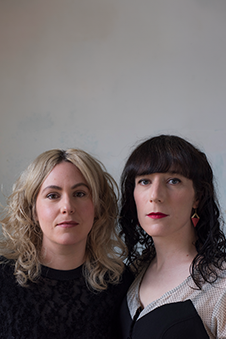The Frances Hodgkins Fellowship was established by the University of Otago Council in 1962 to aid and encourage painters, sculptors and multi-media artists, while at the same time associating them with the life of the University and fostering an interest in the Arts within the University. It was named after Dunedin-born Frances Hodgkins, one of New Zealand's most distinguished painters.
The annual, 12-month Fellowship provides a studio/office space and not less than the minimum salary of a full-time university lecturer. It is open to artists who are normally resident in New Zealand and who, in the opinion of the Selection Committee, have executed work that demonstrates their talent, and would benefit from holding the Fellowship.
See the list of all previous Frances Hodgkins Fellowship recipients
The Frances Hodgkins Fellowship 2024 is shared by Miranda Bellamy and Amanda Fauteux
 Miranda Bellamy and Amanda Fauteux
Miranda Bellamy and Amanda Fauteux
This is the first time this Fellowship has been awarded to more than one person. Miranda Bellamy and Amanda Fauteux have been collaborating since 2019 and are approaching the work of the Fellowship equally, working together on all aspects from initial concept development and research through to outreach activities, production, and the presentation of the final exhibition.
“It's an honour to be selected as the Frances Hodgkins Fellows. We recognise the incredible legacy of the Fellowship, built by so many outstanding artists. We are very proud and excited to have the opportunity to contribute to this in a new way as the first collaborators to be awarded the Fellowship,” say Bellamy and Fauteux in a joint statement.
In their work, these Ōtepoti Dunedin-based artists identify and extend the stories of plants and rocks through site-specific research and experimentation.
Working with sculpture, installation, photography, video, audio, and printed matter they reflect on material accountability, reciprocity, ways of seeing, and the critical review of human and particularly settler-colonial histories.
During their joint tenure, they will extend their research on the electrical biodata of plants - measuring an individual plant’s electrical response to their environment.
They aim to learn more about emerging studies on plant communication and develop ways of sonifying or otherwise interpreting these new discoveries into interdisciplinary and particularly sculptural works.
They are excited to collaborate across disciplines within the University.
“We have already experienced such generosity from the University community in researching and developing past projects, and we can't wait to be embedded in the context of such innovative and esteemed knowledge and research.”